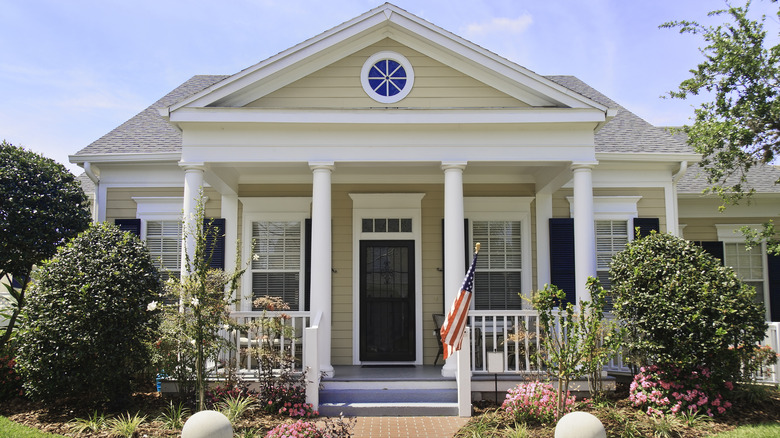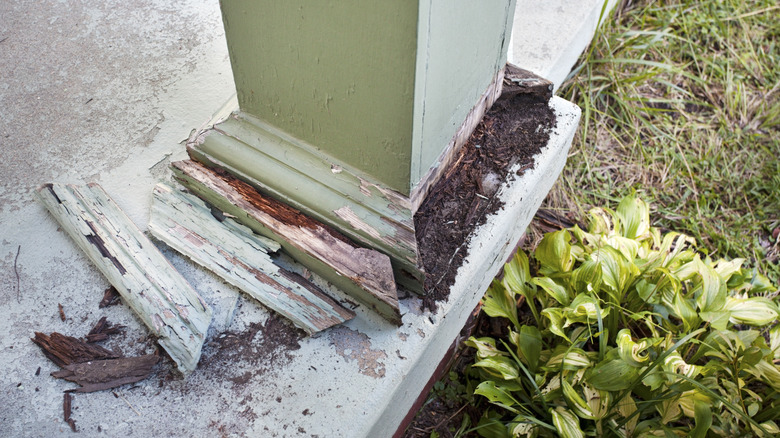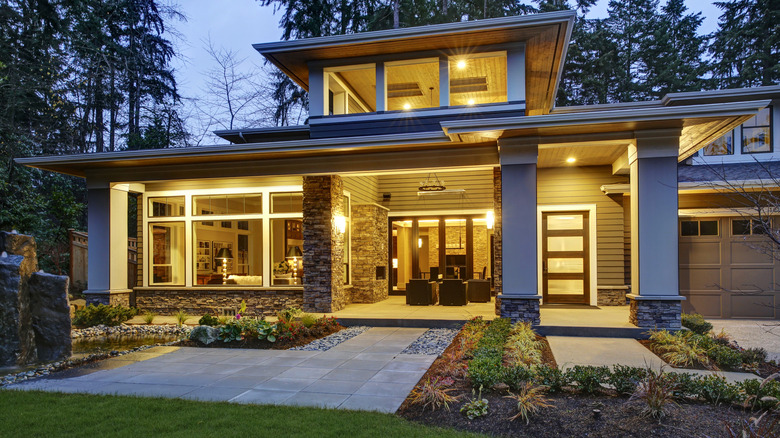Completely Change The Look Of Your Porch With This Easy DIY Column Project
One of the easiest, most effective ways to renovate your porch might be converting your round columns to more modern square columns. It's easy — second only, perhaps, to adding a stylish swing to cozy up your porch — because you're not actually converting them at all, but simply wrapping them for a different look. There are a few reasons you'd want to change your existing columns. In some cases, the original columns are nothing more than posts — skimpy steel structural members holding up the porch roof. They're used for their strength and not their aesthetic appeal. The other main reason is to modernize the look of a home. It's not that round columns are out of style, but rather that they are appropriate to certain sorts of homes. Round columns are more likely to show up in front of grand and historical homes; you'll usually see round columns in plantation-style homes, and square columns in modern farmhouses, for example.
Switching up your columns is so simple, in fact, that you can do it barefoot in the rain and end up impressing thousands of TikTok DIYers, as @them4fam did (although we definitely recommend wearing sturdy shoes to protect your feet!) They took the simplest possible approach and completely transformed their porch in no time, using four boards, butted against each other, to cover each column. You can shim the space between your boards and the column with wood if it needs the extra support. From this starting point, the sky (or at least the porch roof) is the limit.
Wrapping moisture-proof columns
You can make your new columns as elaborate as you have the time and skill for. Simply creating a box around your existing columns is the simplest way to go, but it isn't the only one. For durable and pleasing columns, there are a few important steps to follow. The key is to figure out how you're going to keep water out of your columns, or at least try to. The bottoms of porch columns will get wet in almost any situation as rain blows against them and onto the porch floor, and this invites all the downsides of moisture, like rot and mold. Wrapping your column can worsen these issues because it's easy to create a space that traps and wicks water. So it's important to use only waterproof materials like PVC or to properly seal your columns and, when possible, elevate the base above floor level and control where water will flow by either keeping it out or controlling where it will go.
To protect the bottoms of your columns, attach them slightly above the floor and seal the bottom by stuffing backer rod into the gap (this is the stuff you use to seal the spaces between tile backer boards). The backer rod will serve as a surface against which you can apply caulk to close the gap between your column sides and the floor. Also, carefully caulk any gaps between boards, since otherwise they will be prone to wicking moisture along their lengths.
Don't forget the trim
Don't give in to the temptation to leave your columns un-trimmed. It will be noticeable at the bottom, and will look unfinished. The top trim is less critical, and simple trim will usually do to either ease or hide the transition to the porch roof structure, unless you're going for a particular style that demands certain type of capital (pillar top). Though it seems unlikely that many people are DIYing elaborate Corinthian columns.
When it comes to style, your pillars can be trimmed as you see fit, for an almost limited number of effects. It's relatively easy to convert plain column with a rectangular profile to craftsman-style columns, for example, by adding a substantially broader plinth as a base for the column, roughly chair rail-height, and perhaps beefing up the trim at the top as well. (This can be done with wood or PVC trim boards, but you can also use real or faux stone.) Craftsman columns are often tapered, but it's not a requirement of the style. But for most homeowners, simple columns with wide trim boards at the base and less wide ones at the top will do the trick. The final step in finishing your porch columns in style is to choose a finish. Consider stain rather than paint, and look for a color that will upgrade your porch's curb appeal.


